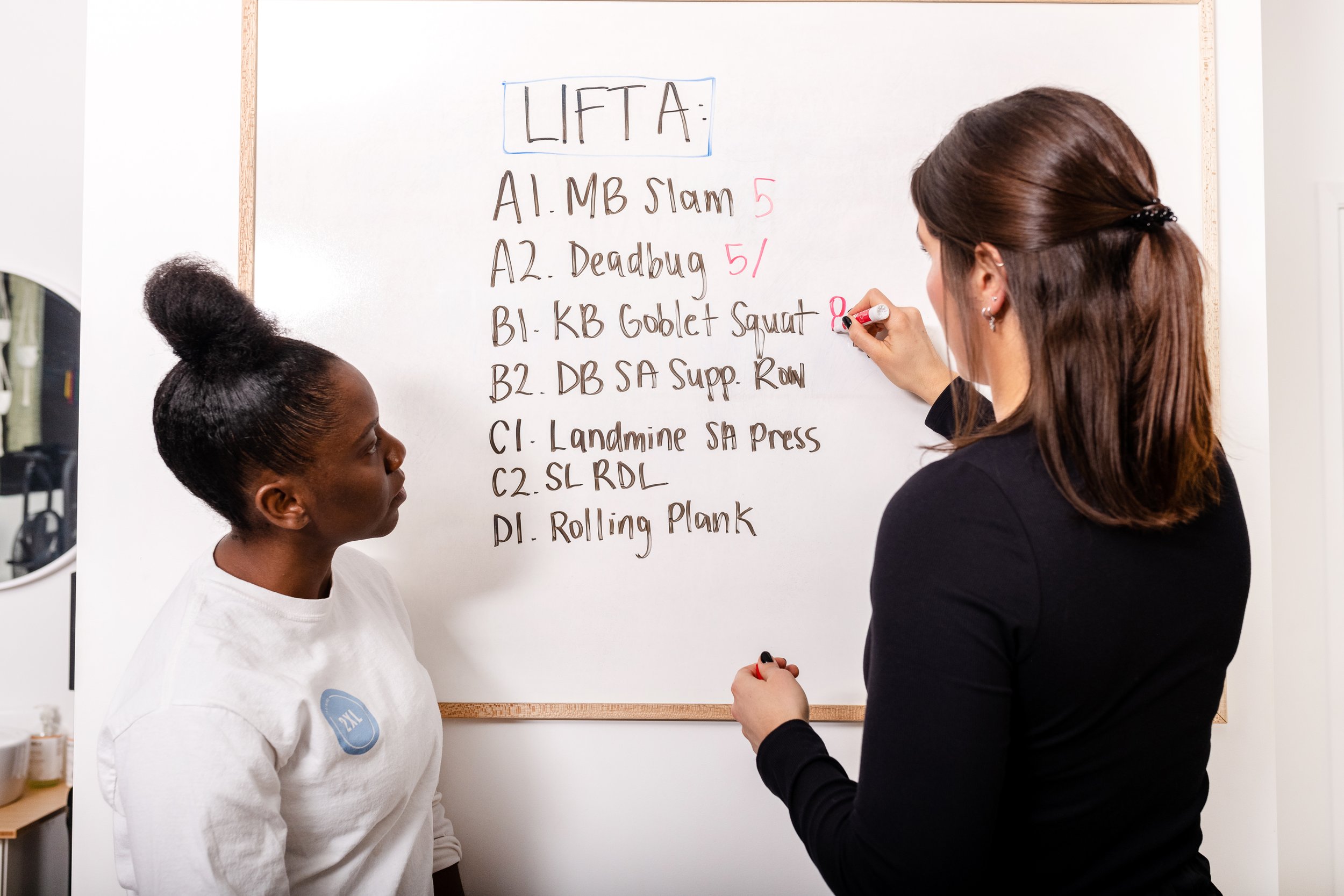The Power of a Good Combo
Supersets are an excellent way to provide efficiency in a training session and program. A superset is when you pair two exercises intentionally together, completing them consecutively then resting before performing another set.
SUPERSET: The intentional pairing of two exercises performed consecutively followed by a period of rest in a training session.
Supersets are generally two exercises that work opposing muscle groups to allow for additional rest between sets. For example, if you pair a DB Goblet Squat with a DB SA Supported Row followed by a period of rest, not only are you getting rest after both exercises, the muscles predominantly used for the squat will get additional rest as you perform the row because they utilized different muscle groups. Not only is this an effective way to set-up a training session, it also makes things more efficient in a training session, allowing you to get quality work done in a shorter period of time (without sacrificing appropriate rest for your goals).
Aside from pairing together two exercises that use opposing muscle groups, there are a couple other combinations you can utilize to incorporate some additional benefits.
Superset Combinations:
Opposing Muscle Groups - Allowing for additional rest between sets; this is helpful if you’re looking to build strength in a certain movement but want to keep your session efficient.
Supportive - Pairing a foundational movement (like the squat), with an accessory movement that compliments it (like a glute bridge - engagement/ use of glutes in squat pattern); this is helpful if there is something in particular you want to focus on in one of your foundational movement patterns.
Similar Movement Patterns - Pairing two exercises of a similar muscle group to work on more muscular endurance; this can be challenging, so ensure that your technique remains sound as you perform both exercises.
Additional Work - Pairing together exercises that reap some additional benefits like grip strength; for example, pairing a DB Reverse Lunge with a Pull-up - both are grip-intensive so there can be an added benefit of grip-work to the pairing.
There are a couple considerations to make when you are programming supersets (or when you’re performing them in the gym) that could impact the effects of the pairing.
Flow of Session & Equipment Availability - Important to understand where equipment for each exercise could be found in the training environment as you want to ensure it’s an efficient pairing that flows from one to another seamlessly.
Training Age - This could impact the types of movements you pair together like a grip-intensive superset may be better suited to someone with a higher training age.
Purpose of Training Session - Important to ask yourself what the desired outcome/ adaptation is for that training session; could this supersets positively impact that?
High Threshold vs. Low Threshold Exercises - Performance quality should be the priority, so ensure that you’re pairing a high threshold exercise (like a heavy loaded deadlift), with something of a lower threshold (something that utilizes less energy and output) to get the most out of each!
The true definition of a superset is when it is two opposing muscle groups, however, I do think there are other ways to combine movements in a training session to get additional benefits and create efficiency in your training!
This is something we covered in this past weekend’s Cueing & Programming Clinic at Strada Health in Bedford, NS. Supersets are very useful when programming, but it’s important that you are intentional with how you go about doing it.
If you’re for some support in your programming, you can check out the Practical Programming Course, or if you’re looking for some in-person learning and want to learn more about the School of TRAINING2XL Cueing & Programming Clinics, contact me HERE to chat about upcoming events, or to host one in your area!
Stay Strong Team,
A

